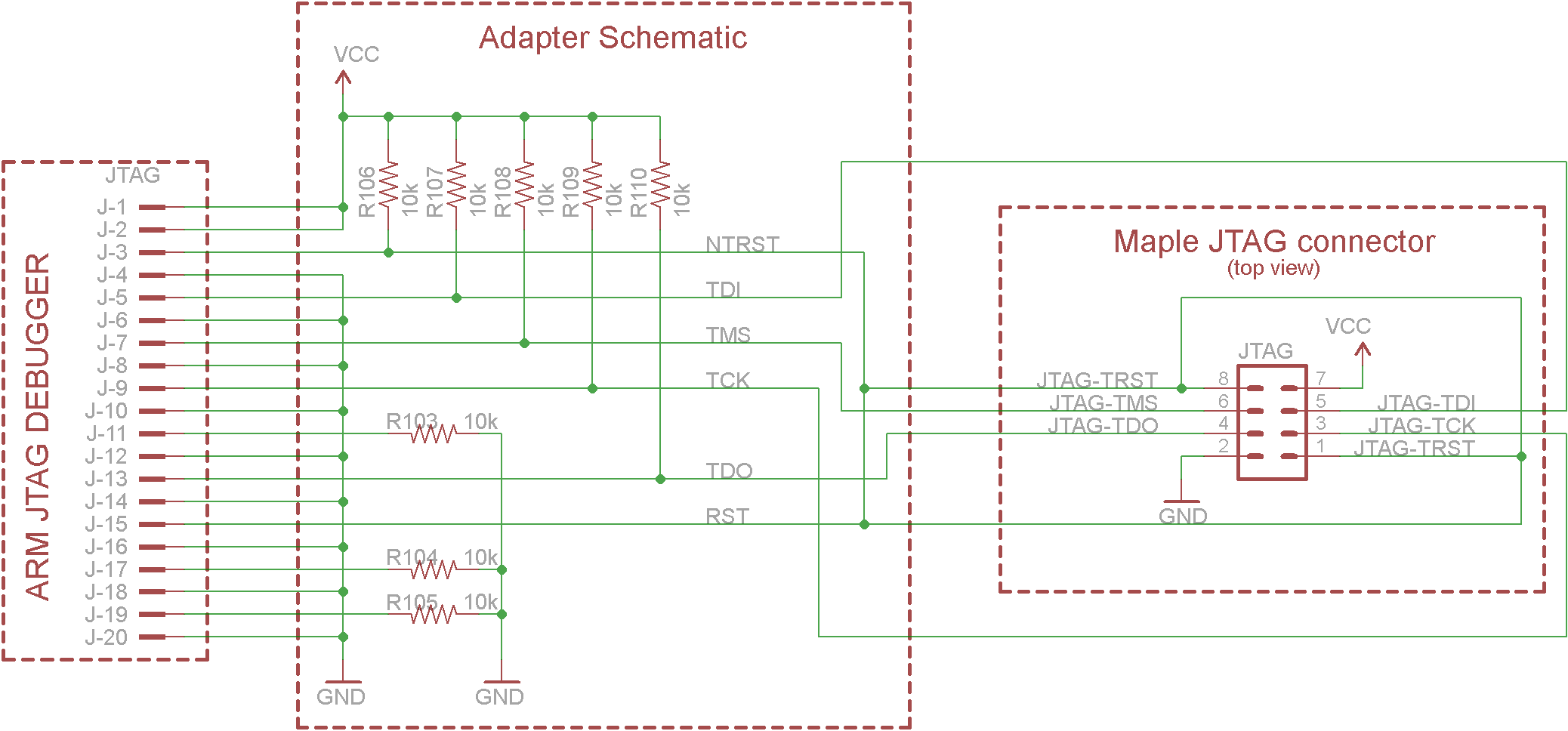Navigation
- next
- previous |
-
leaflabs.com ·
- Index »
JTAG is an interface for low-level debugging of digital devices. It gives instruction by instruction control over the microprocessor and allows data to be read and written to arbitrary memory and register locations. It is typically used with a debugging tool like gdb when hacking low level routines and hardware peripherals (we use it when working on libmaple) or to flash a new bootloader.
Note that the STM32 on the Maple has a built-in low level serial debugger which could also be used to flash bootloaders, and ASSERT(...) allows basic debugging over a USART serial channel. We expect only fairly advanced users to use this feature.

JTAG wiring diagram (large version) to connect a standard 20-pin ARM JTAG device to the 8-pin JTAG port on the Maple.
The Maple has holes for a 8-pin JTAG header, but that header is not soldered on. To use JTAG, simply solder on standard 0.1” pitch male header pins (either the exact 4 by 2 block, or two 4-pin pieces of straight breakaway header).
We have had good experience with the Olimex ARM-USB-OCD device, which costs about €55 plus shipping (as of April 2011).
You can disable or enable the JTAG and Serial Wire debugging ports in software using the disableDebugPorts() and enableDebugPorts() functions.